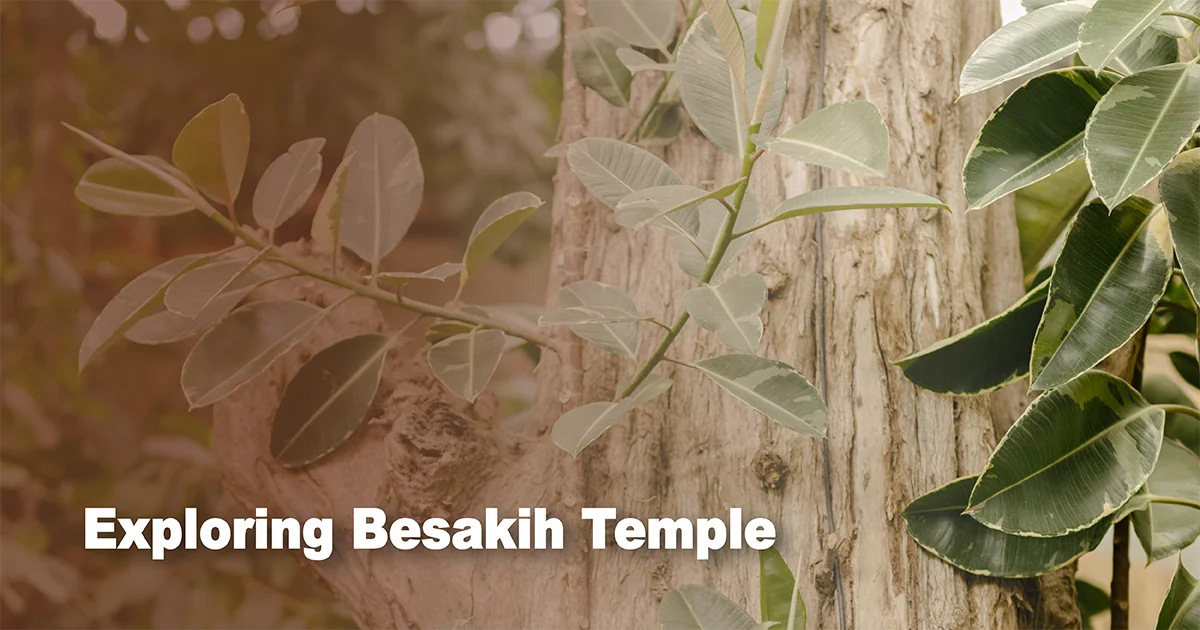Located on the slopes of the sacred Mount Agung, Besakih Temple is the largest and holiest temple complex in Bali, often referred to as the Mother Temple. This iconic site offers an unparalleled glimpse into the island’s spiritual life and rich cultural heritage. Let’s explore the significance and uniqueness of Besakih Temple, how to reach it, and what you can do once you’re there.
The Significance of Besakih Temple
Besakih Temple holds tremendous significance for the Balinese Hindu community. It is considered the most important of the island’s thousands of temples and is a major site of worship. The temple’s elevated location on Mount Agung, Bali’s highest and holiest mountain, underscores its spiritual importance, symbolizing the sacred axis that connects the world of humans to the realm of the gods.
Dating back over a thousand years, Besakih is a complex of 23 separate but related temples, with the largest and most important being Pura Penataran Agung. The complex serves as a central venue for major religious ceremonies, which draw devotees from across the island. For the Balinese, visiting Besakih is both a spiritual pilgrimage and an integral part of religious life.
The Uniqueness of Besakih Temple
What sets Besakih apart from other temples in Bali is not only its size and status but also its architectural grandeur and the mystical aura that surrounds it. The temple complex is an awe-inspiring fusion of traditional Balinese architecture and landscape design, with tiered terraces, intricately carved gateways, and numerous shrines set against the backdrop of Mount Agung.
Besakih’s unique ability to accommodate various caste groups and rites makes it distinctive, as it serves the entire Balinese community. Unlike other temples that might cater to specific sects or families, Besakih is open to all Hindus, symbolizing universal acceptance and harmony in diversity.
How to Get to Besakih Temple
Besakih Temple is located in the village of Besakih in eastern Bali, about 1,000 meters above sea level. Getting there can take about 2-3 hours from the tourist hubs of Ubud or Denpasar. Here are a few options for reaching this sacred site:
Hire a Private Driver
This is one of the most convenient options for reaching Besakih. A private driver can offer flexibility, local insights, and the comfort of being able to stop at other attractions along the way, such as the beautiful rice terraces or the Tirta Gangga water palace.
Read more: 8 Things to Consider When Hiring a Driver in Bali: Expert Tips
Car or Scooter Rental
For those who prefer to explore independently, renting a car or scooter is an option. This allows for a more personalized journey, but roads can be narrow and winding, so it’s important to exercise caution and ensure you have a valid international driving license.
Join a Tour
Many travel companies offer day tours that include a visit to Besakih, often paired with other nearby attractions. This option provides a guided experience, ideal for those who want in-depth historical and cultural context.
What to Do at Besakih Temple
Upon reaching Besakih, you’ll step into a world that captivates both spiritually and visually. Here are the activities you can enjoy while visiting:
Explore the Temple Complex
Stroll through the sprawling complex, which features multiple temples each dedicated to different deities and purposes. Pura Penataran Agung, the main temple, is a must-visit with its grand stairways and beautifully decorated shrines. Wander the grounds and marvel at the intricate stone carvings, tiered pagodas, and panoramic views of the countryside.
Read more: Experience Authentic Bali: 6 Must-Visit Traditional Villages
Attend a Festival or Ceremony
If you’re lucky enough to visit during one of Bali’s numerous religious festivals, you’ll witness Besakih at its most vibrant. Ornate offerings, ceremonial music, and colorful processions create a truly immersive experience. Ngusaba is one such major festival that takes place around March or April involving elaborate rituals.
Participate in a Prayer or Meditation
Experience the spiritual side of Besakih by participating in a prayer ceremony or simply spending time in quiet reflection. The tranquil setting of the temple provides the perfect backdrop for meditation, allowing you to connect with the surroundings on a deeper level.
Capture the Scenery
With its commanding location and stunning architecture, Besakih is a photographer’s paradise. Capture the beauty of the temple against the dramatic landscape of Mount Agung, especially during sunrise or sunset, when the light casts enchanting shadows and highlights the temple’s intricate details.
Engage with Local Guides
Engaging with a local guide is highly recommended as they can offer valuable insights into the significance of Besakih, the symbolism of its architecture, and the customs practiced by devotees. Guides are often available for hire at the entrance, ensuring an informative visit.
Read more: Pura Tanah Lot, One of Bali’s Most Iconic Temple
Visitor Tips for Besakih Temple
- Dress Modestly: As Besakih is a place of worship, it’s important to dress respectfully. Sarongs and sashes are usually available for hire at the entrance if needed.
- Be Respectful: Always be respectful of ceremonies and worshippers. Photography during rituals should be discreet and done from a respectful distance.
- Prepare for Walking: The complex is extensive, so be prepared for a fair amount of walking with some stairs. Comfortable footwear is advisable.
- Stay Hydrated: The altitude and heat can be taxing, so carry water to stay hydrated during your visit.
Besakih Temple is more than just a tourist attraction; it is a living testament to Bali’s rich religious and cultural heritage. Its awe-inspiring architecture, spiritual significance, and breathtaking location make it a must-visit for anyone seeking to understand the soul of Bali. Pura Besakih always offers an experience that stays with you long after your visit.












